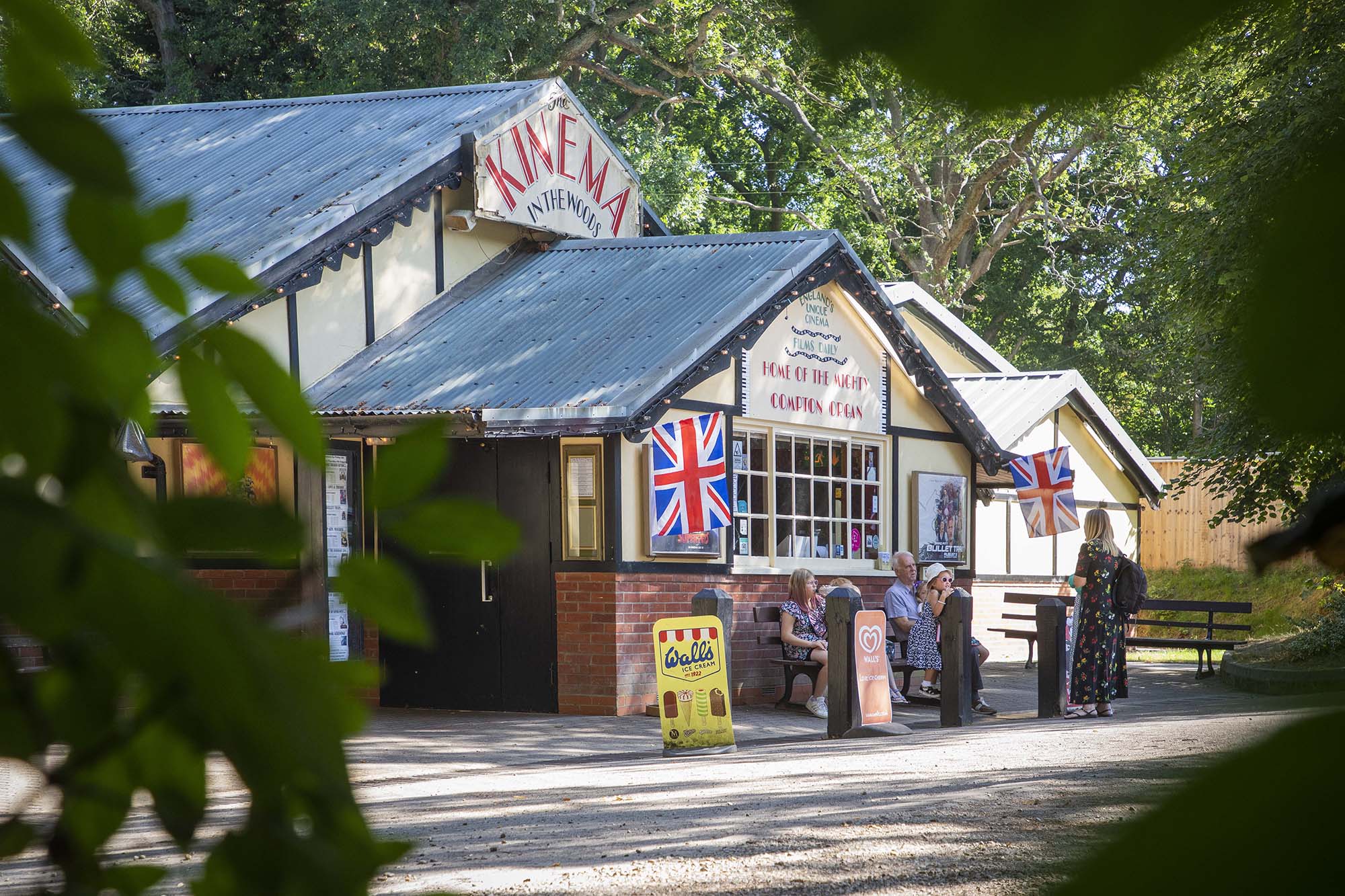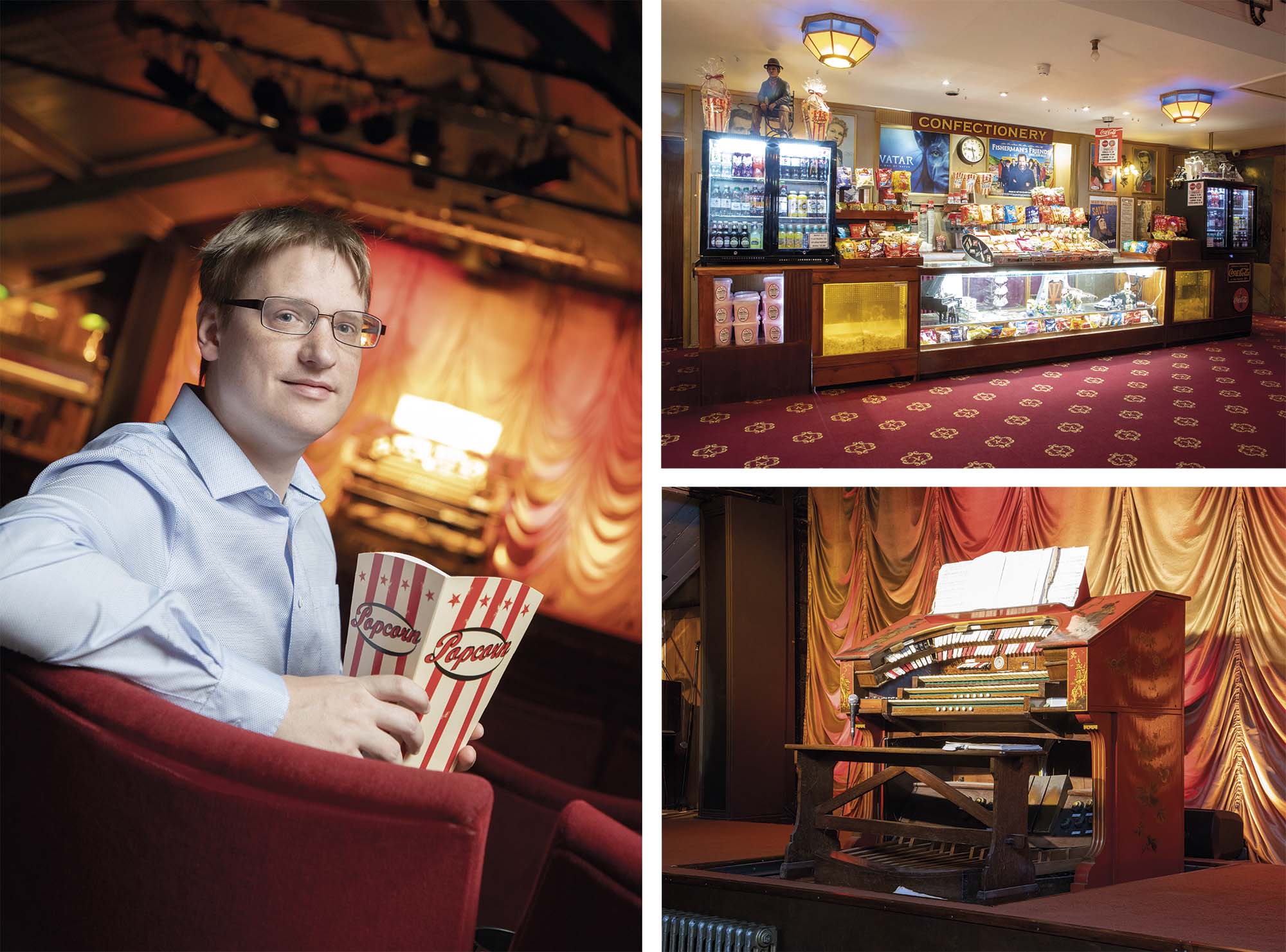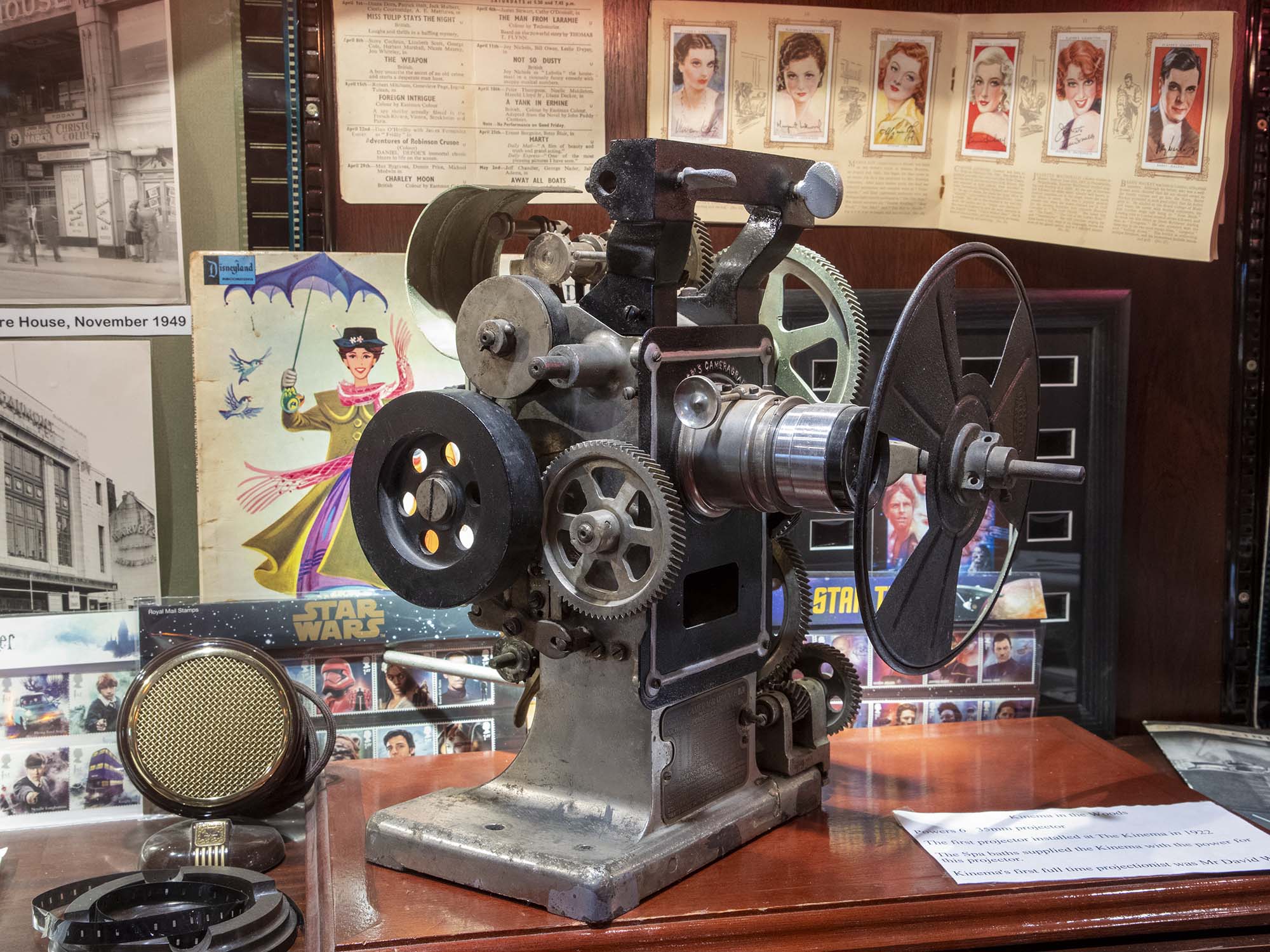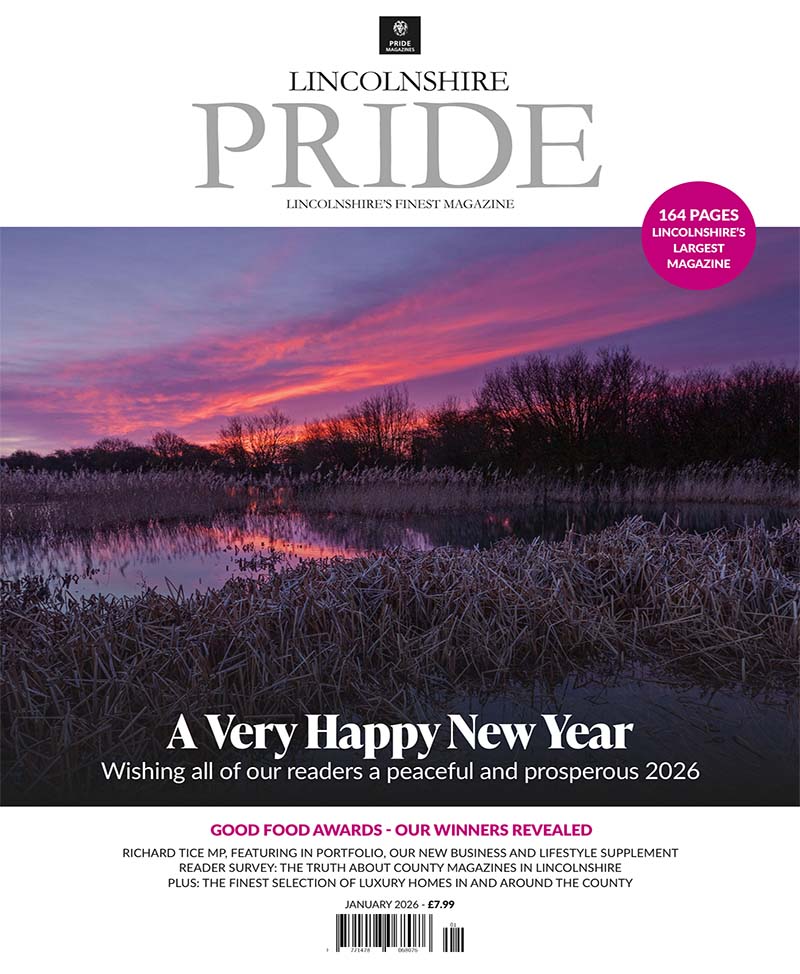
100 Years of Kinema in the Woods
“Kinema in The Woods has only had three previous owners, so I did feel the burden of responsibility that comes from taking on not just a business, but one of the most beloved places in Lincolnshire!” The words of Cinema manager Philip Jones as he celebrates a century of Woodhall Spa’s ‘Flicks in the Sticks…’

Look Out! One of the earliest public film screenings was L’arrivée d’un train en gare de La Ciotat in 1895. Not a fancy art house French film with a clever title, but in fact comparatively dull footage of just that; a train in motion, travelling towards a camera.
It was a short documentary-style film shown by Auguste & Louis Lumière. The moving image began to emerge from about 1878 developing from several technologies from photography to animation. Though no one single person can be credited with ‘inventing’ cinema, the Lumière brothers certainly ensure it came to people’s attention in the early days.
Viewers of the above film saw a train heading towards the camera, and were terrified, screaming and leaping out of their seats, convinced that the train which was heading towards them would come through the screen and smash into them. Sounds ludicrous in our mediated world, but it was a powerful, ground-breaking spectacle at the time, and the medium of cinema would yield many more moments of fright, raucous laughter, surprise, passion and delight for the next century and beyond.
Narrative films – i.e.: those which that told a story – would emerge with The Great Train Robbery in 1903, a 10-minute film which was also ‘edited’ with different scenes cut together. A Visit to the Seaside brought colour to the medium in 1908. 1909 saw the first feature-length film – Les Miserables – and then in 1915 D W Griffith’s (now horribly racist) Birth of a Nation was the first big-budget Hollywood epic. Finally, 1927 saw The Jazz Singer, emerge as the first film with dialogue.
By 1922, film was establishing itself as the entertainment medium of the future, and Woodhall Spa’s Kinema in the Woods was founded in a former sports pavilion, in the same year as the BBC was founded. Remarkably, in that time Kinema in the Woods has had just three owners/managers; Major Carleton Cole Allport, James Green and now Philip Jones.
The latter began working at the Kinema in 2004 as a projectionist and acknowledges the responsibility and joy of serving as nothing less than the custodian of cinema history in Lincolnshire.
“I do feel the weight of responsibility,” says Philip. “Kinema isn’t just a business or a cinema, it’s absolutely beloved by the county. It’s history through the prism of film.”
In an age of multiplexes, Kinema is the David to the industry’s Goliaths, but with four screens and the latest laser projection plus Dolby 7.1 sound in its most recently added screen, it’s technologically right up-to-date. Still, the place retains its charm as somewhere more parochial than the out of town cinemas run by big entertainment chains despite its diminutive nature. Cineworld has box office revenues of £311m from its 101 cinemas; Odeon has a £296.8m share of the market and 120 cinemas, followed by Vue with a market share of £271m, Showcase with £81.9m and Everyman’s £41.8m.
Kinema is a sort of love letter to the medium, valuing its heritage with display cabinets of classic film posters and equipment including its original 1922 projector in the lobby and devices to splice films. And yet the cinema is still faithful to its original purpose, showing 200 different films across 3,000 screenings each year. Its four screens have 169, 92, 74 and 21 seats; a total of 356 seats. Across 3,000 screenings, we reckon that around 100,000 cinemagoers a year enjoy a visit to the Flicks in the Sticks.
“It’s a year-round place to enjoy, but rainy days rather than sunny days are better in the summer,” says Philip. “It depends on the film releases, and I ultimately choose what to screen and determine the schedules for the four screens, but we tend to show what we know will be popular from experience.”
“Films are made by ‘film companies’ who own or use distributors, and we ‘buy’ films from those distributors. There are about six major UK film distributors. Around 10 films are released every week but eight of those will be niche titles, only a couple will be mainstream releases.”
“The government supported cinemas during Covid but it was still awful to see the place empty. The first big release post-Covid was No Time To Die, and that was when the cinema started to be really full again, when it felt like there was light at the end of the tunnel.”
“The industry likes mainstream cinema, but the sizes of our screens also enables us to screen films which aren’t big blockbusters per se, but will be popular with our local audiences – historical biopics like 2022’s forthcoming Lost King, a comedy drama about the 2012 discovery of Richard III’s remains in a Leicester car park.”
As for Philip, he gets to see all the films he fancies, but it’s telling that in his office on the wall is the film poster for his very favourite film of all time, 2006’s The Prestige, a psychological thriller directed by Christopher Nolan. Have I seen it, he asks. I haven’t, but I’ll definitely take that recommendation.
Meanwhile, as my meeting with Philip draws to end, the first audience of the day streams in, making their way straight over to the popcorn, the smell of which is already wafting through the cinema. Taking their seats and watching the Kinema’s Compton organ descend back down into the floor, the lights dim on the audience. But never ever on cinema itself.

How are films shown at Kinema today?
Thanks to low roof trusses, Kinema remains the country’s only full-time cinema to rely in rear-projection. Opposite is the most modern film projector, which shone film onto a mirror which was when projected 90° onto a screen about 20ft in front of it. Films arrived in reels around 20 mins in duration and the Kinema staff had to manually splice them together and mount them on metre-wide spools which fed the 35mm film into the projector… until the entire industry went digital from 2010-2012.
Today, films arrive in the Kinema’s projection room, via an ordinary broadband internet connection. Commercial quality films are about 150-200 gigabytes in size. Cinemas purchase them from distributors along with a digital key which specifies how many times and on what dates they can be shown. Downloaded a week in advance, staff cue up adverts and trailers, then a computer sends the image to a digital projector, and the audio track via a Dolby 7.1 sound processor to about 20 speakers.
The digital projector’s Xenon bulb is between 2kW and 6kW, lasts 2,000 hours and costs £700 to replace two or three times a year. The Kinema’s newest screen, number four, has a laser projector, which is slightly newer and smaller technology.

Kinema in the Woods: A century of cinema…
1811: Men working in a mineshaft near the site discover water and the hamlet of Old Woodhall becomes a spa town.
1860-1884: Stafford Hotchkin develops a hotel and spa nearby.
1888 (approx): A sports pavilion is established in the grounds of Hotchkin’s Pavilion Victoria hotel.
1922: Sir Archibald and Lady Weigall purchased the Victoria Hotel’s ruins including the sports pavilion and, with the assistance of Captain Carleton Cole Allport, the pavilion is transformed into a cinema which opened its doors on Monday, September 11th 1922 at 7pm. The first film to be shown was intended to be ‘The Lion Eaters,’ however the film failed to arrive so a Charlie Chaplin film was shown instead.
1928: Sound comes to the cinema for the first time. ‘Interviewing Wild Animals in Africa’ is the first presentation shown with audio.
1930: The Pavilion Cinema’s name is changed to The Kinema in the Woods.
1938-1944: The Kinema is a hit with airmen during WWII.
1953: The final deckchairs are replaced by proper tip-up seats.
August 1973: Major Allport sells Kinema to James Green.
1987: The Kinema’s Compton organ is installed.
1994: Screen two is added to Kinema with 92 seats. ‘Four Weddings and A Funeral’ is its debut film.
2010: 35mm film projection ceases and the cinema ‘goes digital.’
2013: James Green retires and Philip Jones takes over the business.
June 2019: Screen three is added to the cinema, seating 74. The Beatles-themed film ‘Yesterday’ is the first film to be shown.
October 2021: The fourth and final screen, seating 21 people, is opened. It debuts with the film ‘Last Duel.’






